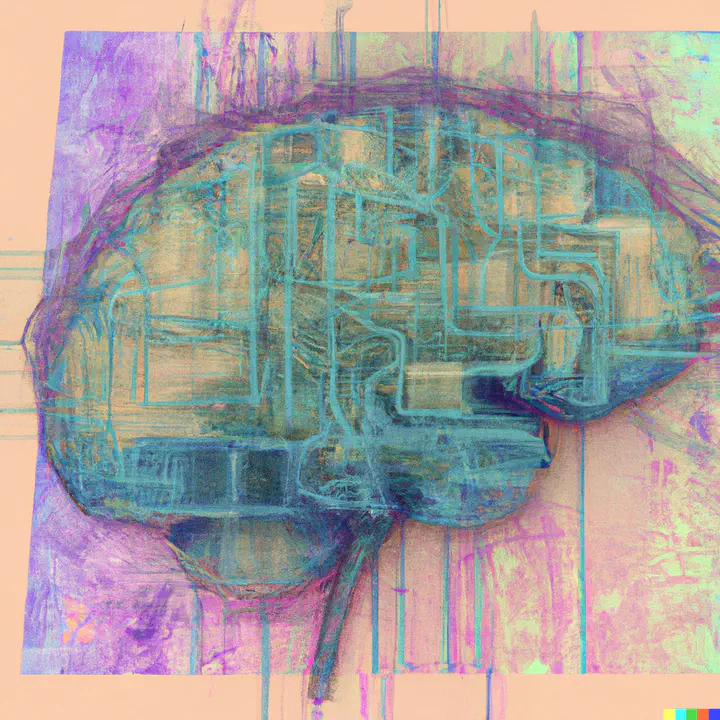 An image of the brain, by DALL-E 2
An image of the brain, by DALL-E 2
Abstract
Memory can be defined as the process by which organisms encode, consolidate and retrieve information. The concept of memory being stored as modifications in neuronal connections was first hypothesized by Ramón y Cajal. This notion was furthered by the works of Donald Hebb, who proposed that the connections between co-active neurons are strengthened during learning.
Engrams are the physical substrates of memories. The neurons that display enhanced synaptic connections and are activated during both encoding and retrieval are proposed as the neural basis of engrams. The term ‘engram’ was coined by Richard Semon in two of his pioneering books. The neurons which are active during both memory encoding & retrieval have been hypothesized to form the cellular and neuronal basis of engrams. He proposed that every engram possesses four defining characteristics. First, engrams are created by enduring physical changes in the brain. Second, an engram has the ability to be ecphoric (i.e.) memory stored in the engram can be retrieved upon the presentation of natural cues or by direct activation. Third, the contents of an engram can be used to both derive the information they encoded and predict the information they would retrieve upon activation. Finally, an engram must persist and should be able to exist in a dormant state between two processes, such as consolidation and retrieval or encoding and retrieval or encoding and consolidation.
Effectively, an engram must be created by persistent activity, possess ecphory, store content, and remain dormant for an extended duration. Over the years, this characterization of engrams has been used to identify them. Studies showed that engram cells are formed when synaptic connections are strengthened between neurons that are active during learning. Engram cells can be distinguished from non-engram cells based on distinctive features such as enhanced dendritic spine density, excitatory postsynaptic current amplitude, whole-cell intrinsic cell capacitance, AMPA to NMDA receptor density ratio, and selective activation of gene transcription. The above characteristics of engrams enable studies at different scales spanning from the molecular level to the network level.
This review will discuss some of the advances made in the study of engrams, their identification, activation, and their role in memory retrieval. Following this, the research findings of the physiological changes that differentiate engram neurons from non-engram neurons and the effects of these physiological changes on memory retrieval are described. Finally, some of the molecular underpinnings that result in these physiological changes and the role of these molecular mechanisms on memory retrieval are analyzed. It also provides possible future courses of research in this field.